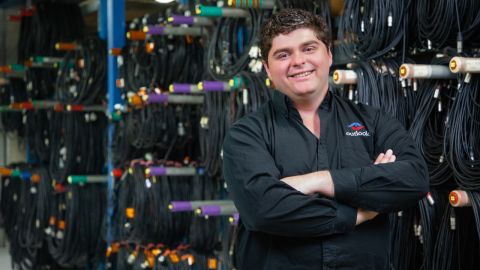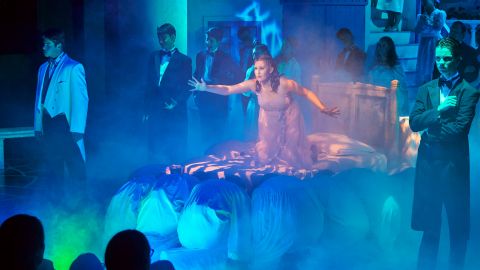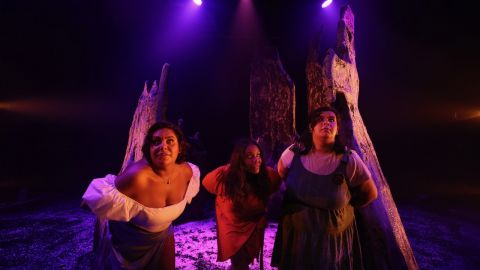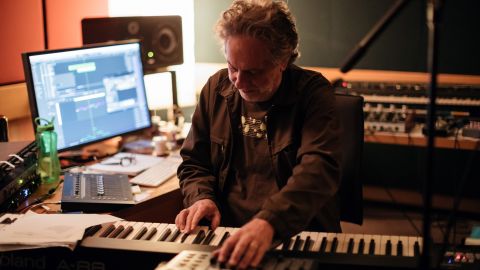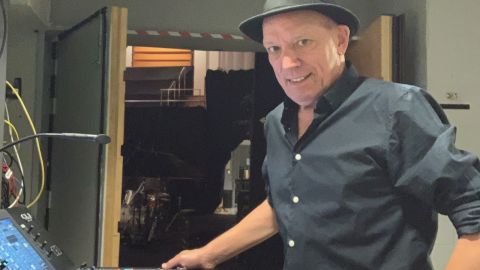Lighting a Serial Killer
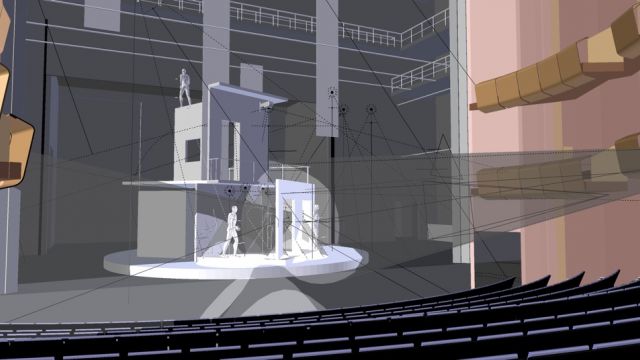
Lighting designer Aron Murray, a NIDA student in the MFA Design for Performance degree, explains the lighting design for Roberto Zucco, a production in the June 2019 NIDA Season.
Guest Director Robert Schuster, from the Ernst Busch Academy of Dramatic Art in Berlin, will stage French playwright Bernard Marie Koltes’ last play, which focuses on the life and crimes of the notorious 1980s Italian serial killer, Roberto Zucco.
Asking where does evil come from, the play explores excess, social violence and alienation, with Zucco the image of a depressive world searching for meaning. Challenging the actors to abandon their own moral determination and inhibition, the piece exposes Zucco as an angel of death that everyone seeks, yet no one understands.

The design is a three-story structure that sits on a revolving stage in the NIDA Parade Theatre. The scenes take part within that structure, at different heights or rooms. The lighting is projections and light sources that emanate out from it and within it.

“What we are interested in with Roberto Zucco is exploring how lighting and video can be brought together to create a more dynamic, living space than is traditionally possible with lighting or video alone,” says Aron. “In the work we are making use of projection technologies to cast textures onto the set that simulate reflections and light wash from the world beyond the play. In this way, we are trying to add detail back to the image onstage that is usually lost through lighting's process of approximation.

“The set is a multifaceted, multi-storey building that sits on a ten metre wide revolve. As the set rotates it reveals different rooms and scenes to the audience. There are a number of practical lights within the revolve to light the scenes locally and give the feeling of living, and in some cases lived-in, space. In some instances these practicals are directly interacted with by the actors on stage and in others instances their operation is cued from the lighting console. The lighting rig is still being developed but consists mainly of conventional fixtures with a complimentary assortment of moving lights, all controlled from a front-of-house console.

“There are obvious challenges with lighting and projecting onto a revolving set, especially with the degree of localisation and accuracy that the work requires. We are looking to explore different approaches for tracking the revolve’s position and ways that this data could then be used to aid or augment the lighting and video systems.”


